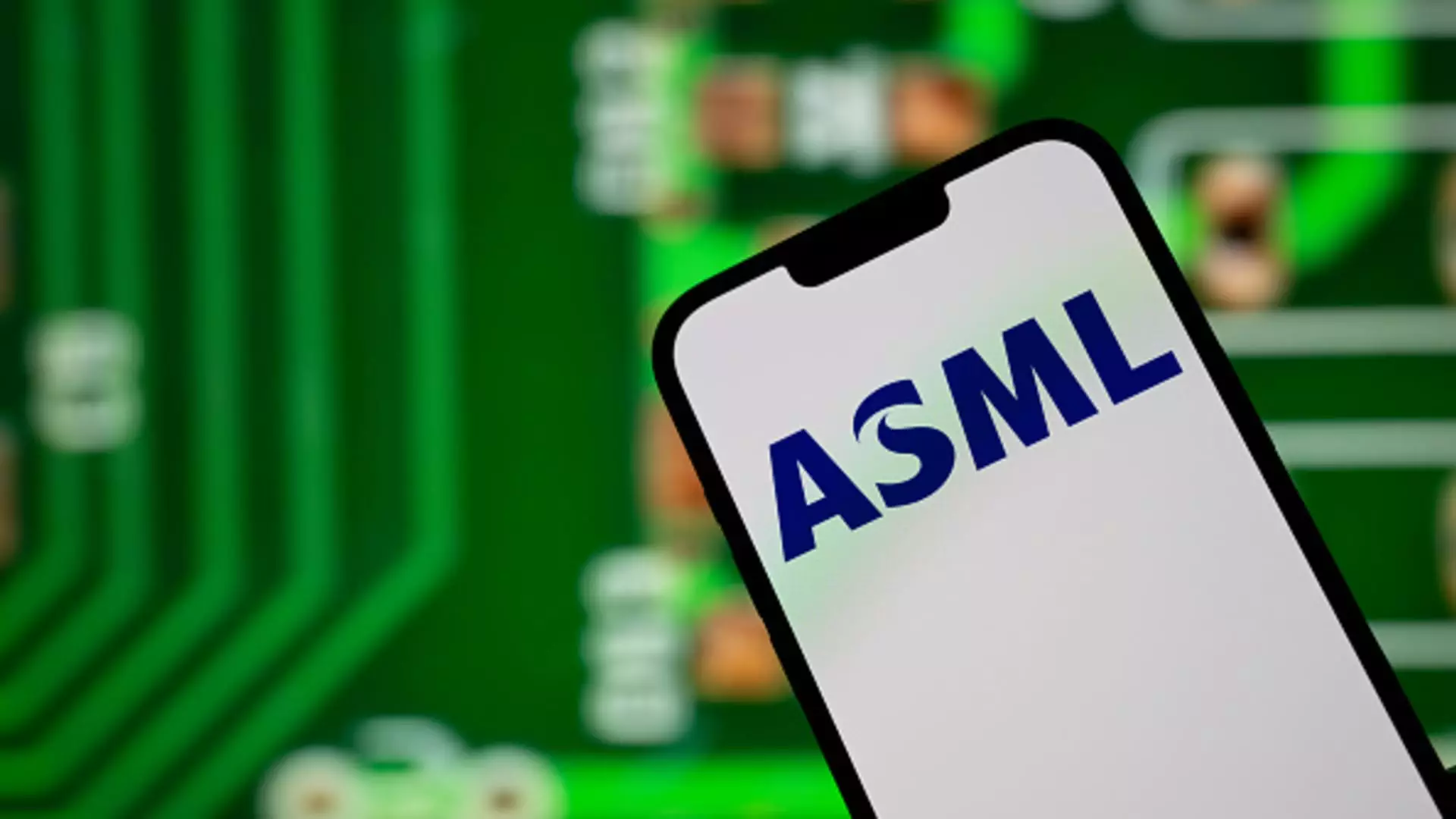In the volatile landscape of semiconductor manufacturing, ASML, the Dutch equipment powerhouse, has emerged as a barometer for both industry health and future trends. Yet, the company’s recent earnings report for the first quarter of 2025 has left analysts and investors with a sense of cautious apprehension. ASML’s net bookings landed at an eye-catching 3.94 billion euros ($4.47 billion), which fell short of the anticipated 4.89 billion euros as projected by Reuters. Such a discrepancy raises critical questions about market demand and the underlying forces shaping it.
Despite this setback, ASML delivered net sales of 7.74 billion euros, narrowly missing expectations. However, impressive figures such as a net profit of 2.36 billion euros, exceeding forecasts, indicate that the company is effectively maintaining its operational prowess. Herein lies a paradox: while ASML demonstrates strong fundamental performance metrics, the dip in bookings suggests a potential cooling of enthusiasm in an otherwise booming sector.
Leading Through AI and Customer Uncertainties
In his commentary, ASML CEO Christophe Fouquet emphasized that demand from the AI sector remains robust, influencing the company’s overall outlook. This assertion highlights a critical growth driver in contemporary tech markets. However, it’s essential to dissect the juxtaposition of strong segmental growth against the backdrop of customer uncertainty. Fouquet acknowledged “uncertainty with some of our customers,” a remark that casts doubts on the continuity of current demand levels.
A deep understanding of customer sentiment and its implications is crucial for ASML, especially in light of the broader economic anxieties ignited by government policies. These uncertainties can lead to fluctuations in investment and purchasing behaviors, which are vital for sustaining ASML’s projected revenue in the range of 30 to 35 billion euros for 2025.
The Role of Tariffs and Macroeconomic Factors
One cannot overlook the looming shadow of tariffs as a significant market disruptor. Fouquet noted that tariffs are “creating a new uncertainty” on both macroeconomic and specific demand fronts. The complex interplay between governmental trade policies, such as those advanced by the U.S. administration, could impose constraints on supply chains and strain operational capabilities. As semiconductor technologies become increasingly integral to numerous industries—from automotive to consumer electronics—impacts from trade policies will inevitably ripple through.
The temporary exemption of certain products, including smartphones and semiconductors, from reciprocal duties offers a glimmer of hope, yet the specter of a national security investigation into semiconductor imports presents further complications. The semiconductor ecosystem thrives on stability and predictability, and any disruption could shatter confidence in the market’s ability to recover and grow.
The Fragile Global Semiconductor Ecosystem
ASML is not only a bellwether for its own performance but a reflection of the broader semiconductor market’s fragility. Over the past few weeks, global chip stocks have exhibited volatility prompted by these tariff discussions. Investment strategies that hinge on the semiconductor sector must account for these developments, anticipating not only immediate market reactions but also longer-term industry shifts.
In an industry that can be as unpredictable as it is innovative, the challenge for corporations like ASML lies in navigating these multifaceted uncertainties. It is a test of resilience and strategic foresight—qualities that will be critical as ASML and its peers chart a path forward amidst these turbulent waters. With AI as a significant growth pillar, the need to balance optimism against a backdrop of geopolitical and economic risk is more crucial than ever.

